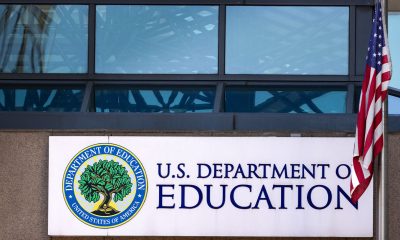Activism
Thousands March in San Francisco to Support Palestine
The San Francisco march appeared as a vast sea of red, black, white, and green, as protesters waved Palestinian flags in those colors that had been provided by organizers.
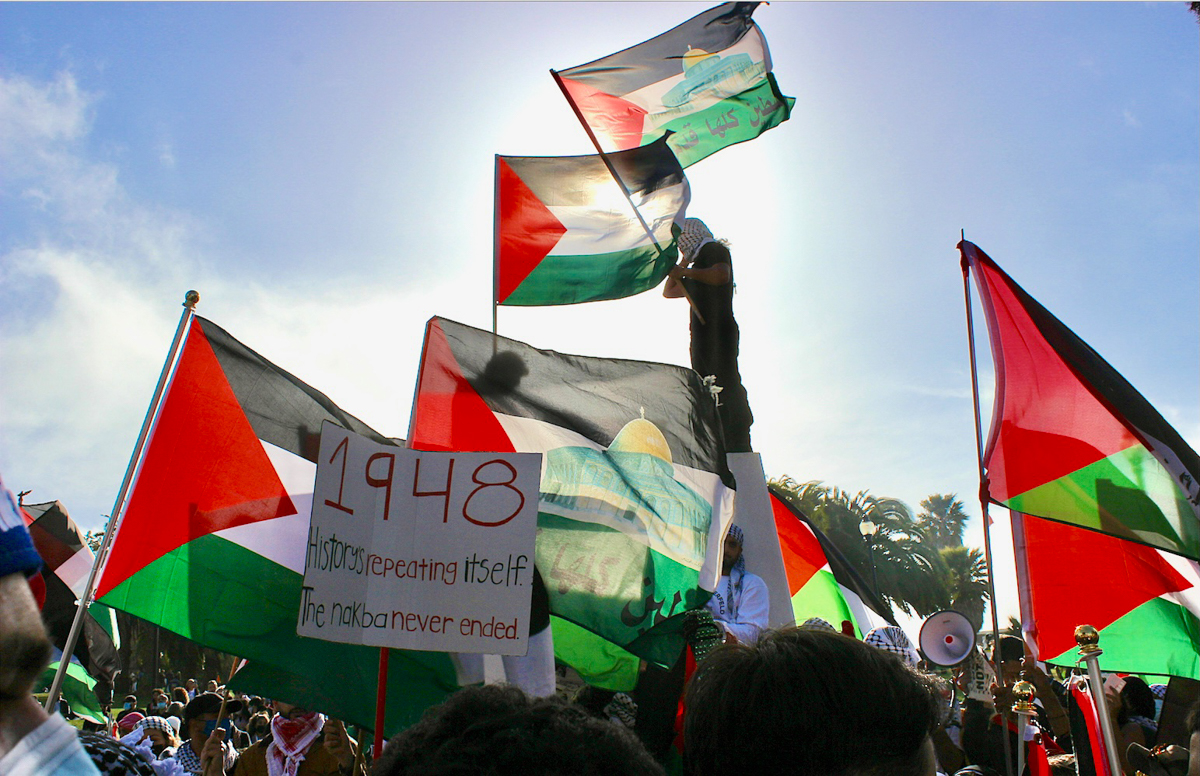
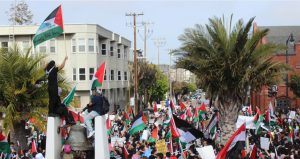
Protestors wave flags and signs in support of Palestine and against the Israeli occupation in San Francisco’s Dolores Park on May 15. Photo by Zack Haber.
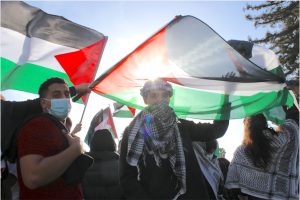
Abdul (left) and Rami (center), stand at a protest in San Francisco’s Dolores Park to support Palestinians and against the Israeli occupation on May 15. Photo by Zack Haber.
On Saturday, thousands gathered in San Francisco’s Mission District at 2:00 p.m. to march in support of Palestine and against the Israeli occupation of Palestinian land.
“It gives me hope that people are waking up who didn’t know about this issue, including people who used to be Zionists, but just can’t find it defensible anymore,” said San Francisco resident Saif Haddad as he stood on a trash can gazing out into a densely packed marching crowd that covered more than four city blocks.
Haddad told The Oakland Post that his grandmother was forced from her homeland in Palestine in 1948. Since then, she has not been allowed to return. Haddad himself has never been able to visit the land where his ancestors once lived.
The march was organized in part in response to the state of Israel’s recent attacks on Palestine. On Monday following the march, Democracy Now! reported that over a two-week period ending on Sunday, Israeli attacks killed over 200 Palestinians including over 50 children, injured over 1,300 and left over 40,000 Palestinians homeless.
The march also responded to the history of Israeli occupation by occurring on Nakba Day, an annual day of commemoration for Palestinians marking the day after the British government formally declared the end of its mandate to recognize the state of Palestine, recognizing Israel in its place on May 14, 1948. Beginning in 1949, Palestinians have commemorated Nakba Day every May 15th with remembrance and protest.
“For my family, Nakba is about why we are here and not our homeland,” said Rami, a Palestinian teenager living in San Ramon who attended the march. Rami’s grandparents were originally displaced from their home in 1948, then bounced back and forth between Lebanon and different parts of Palestine before moving to the United States in the late 1960s.
Rami said that the march was one of the happiest things he had ever been a part of and that he’d not seen so much awareness for Palestine since he was born. He also noted broad national and international support. An article appearing in Buzz Feed News documented other pro-Palestine protests on May 15 in Paris, Tokyo, Madrid, Wash., D.C., Canada, Ireland, Mexico, and London, where organizers say about 100,000 supporters showed up. In Los Angeles, thousands showed up to a march to free Palestine in the Westwood neighborhood, where they stalled traffic.
The San Francisco march appeared as a vast sea of red, black, white, and green, as protesters waved Palestinian flags in those colors that had been provided by organizers. Before the march started, about 50 Palestinians and supporters painted a giant circular street mural on Valencia Street that Palestinian artist Chris Gazaleh had sketched out. It included symbols supporting Palestine such as women wearing keffiyeh scarves, red poppy, and the Palestinian flag with the words “we will return” in Arabic and English.
While many Palestinians came to the march, the crowd was diverse and supporters from many different backgrounds joined them. A young Palestinian child held a sign that read “SAVE THE CHILDREN OF PALESTINE” while a Jewish man from Berkeley in his late 60s carried a sign that read “SON OF HOLOCAUST SURVIVORS AGAINST ISRAEL’S RACIST OCCUPATION.” An indigenous person held a sign that read “NATIVES 4 PALESTINE.”
The march was loud. Drummers and organizers lead chants and the crowd yelled in response. A few were in Arabic, one of which, according to a Palestinian protestor, translated to “with our life, with our blood, we will sacrifice for Palestine.”
Most chants were in English, including one where protestors yelled “not another nickel, not another dime, no more money for Israel’s crimes.” This chant referred to the $3.8 billion that the United States has been sending to Israel every year since 2016, which has continued under President Joe Biden, who recently approved $735 million in weapons sales to Israel. One marcher held a sign which read “Stop US Aid to Apartheid Israel.”
After marching for about two miles in the Mission District, the protestors entered Dolores Park. There, members of the local anti-Zionist groups spoke.
Monadel Harzallah, a Palestinian member of the United States Palestinian Community Network, said “We have no illusions about the US administration here. It doesn’t matter if they disagree with racist Trump, they are following his footsteps when it comes to Israel.”
Continuing, Harzallah accused Biden of not having the courage to reverse any of Trump’s policies in relation to Israel.
Allison Tanner, a Baptist pastor from Oakland and a member of Friends of Sabeel North America, a Christian group seeking peace in Palestine through an end to the U.S.-supported Israeli occupation, said, “We know that Christian Zionists are wielding their power in Washington to help fund and provide political cover for Israel’s war crimes. We are here to decry the evils that they are doing in the name of Christianity and to commit ourselves to challenging Christian Zionism in all its ugly forms.”
Liza Mamedov, of the Jewish anti-Zionist activist group Jewish Voice for Peace, said “The state of Israel has always required, at every step, the forced displacement, racist oppression, fascist surveilling, occupation and apartheid; in one word: genocide against the Palestinian people. As colonized people living under brutalized occupation and siege, Palestinians are overwhelmingly justified in resisting their oppressors by any and all means necessary.”
Members of The Palestinian Youth Movement and Black Alliance for Peace also spoke. The protest started winding down around 6:00 p.m., when Palestinians and supporters left Dolores Park. Hours later though, small groups of people, most of whom appeared to be teenagers or in their 20s, could still be seen driving around the Mission District, honking horns and cheering as they waved Palestinian flags.
Activism
Oakland Post: Week of April 23 – 29, 2025
The printed Weekly Edition of the Oakland Post: Week of April 23 – 29, 2025
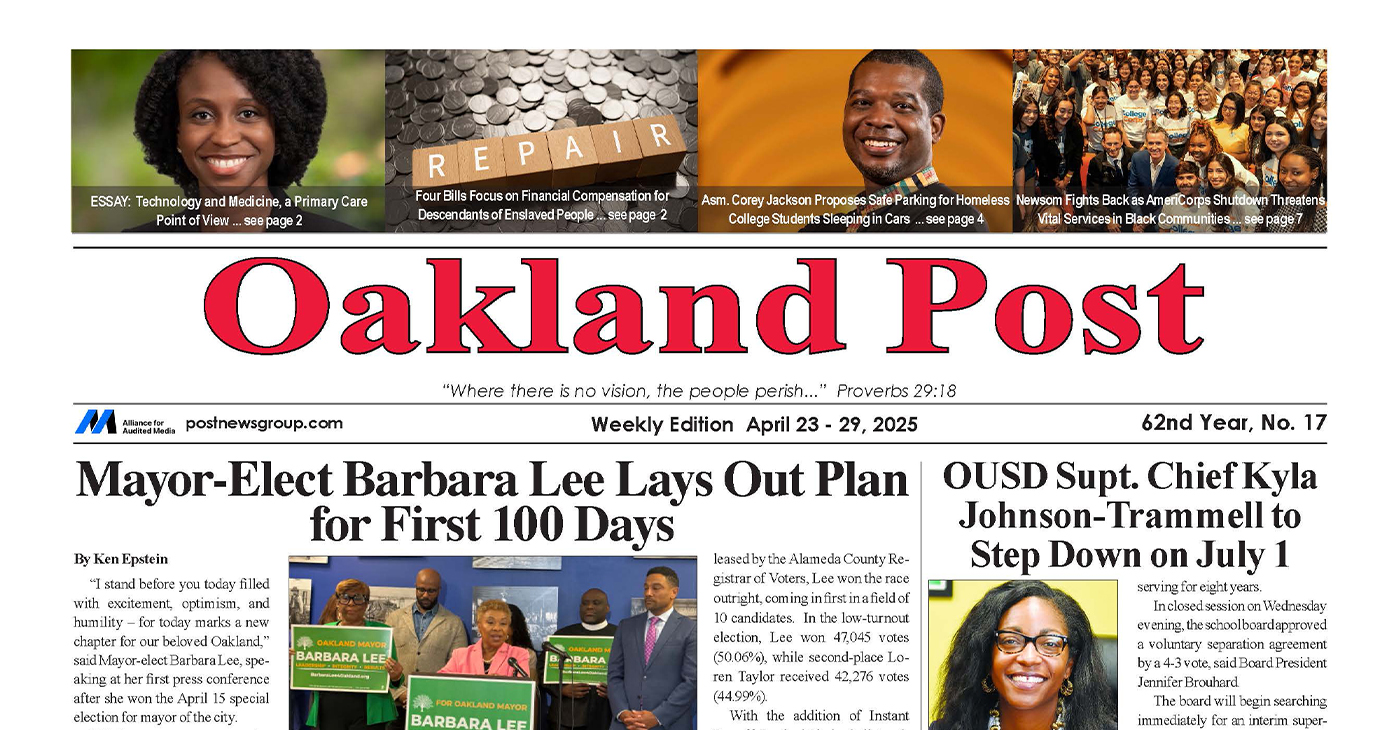
To enlarge your view of this issue, use the slider, magnifying glass icon or full page icon in the lower right corner of the browser window.
Activism
Oakland Post: Week of April 16 – 22, 2025
The printed Weekly Edition of the Oakland Post: Week of April 16 – 22, 2025

To enlarge your view of this issue, use the slider, magnifying glass icon or full page icon in the lower right corner of the browser window.
Activism
Oakland Post: Week of April 9 – 15, 2025
The printed Weekly Edition of the Oakland Post: Week of April 9 – 15, 2025
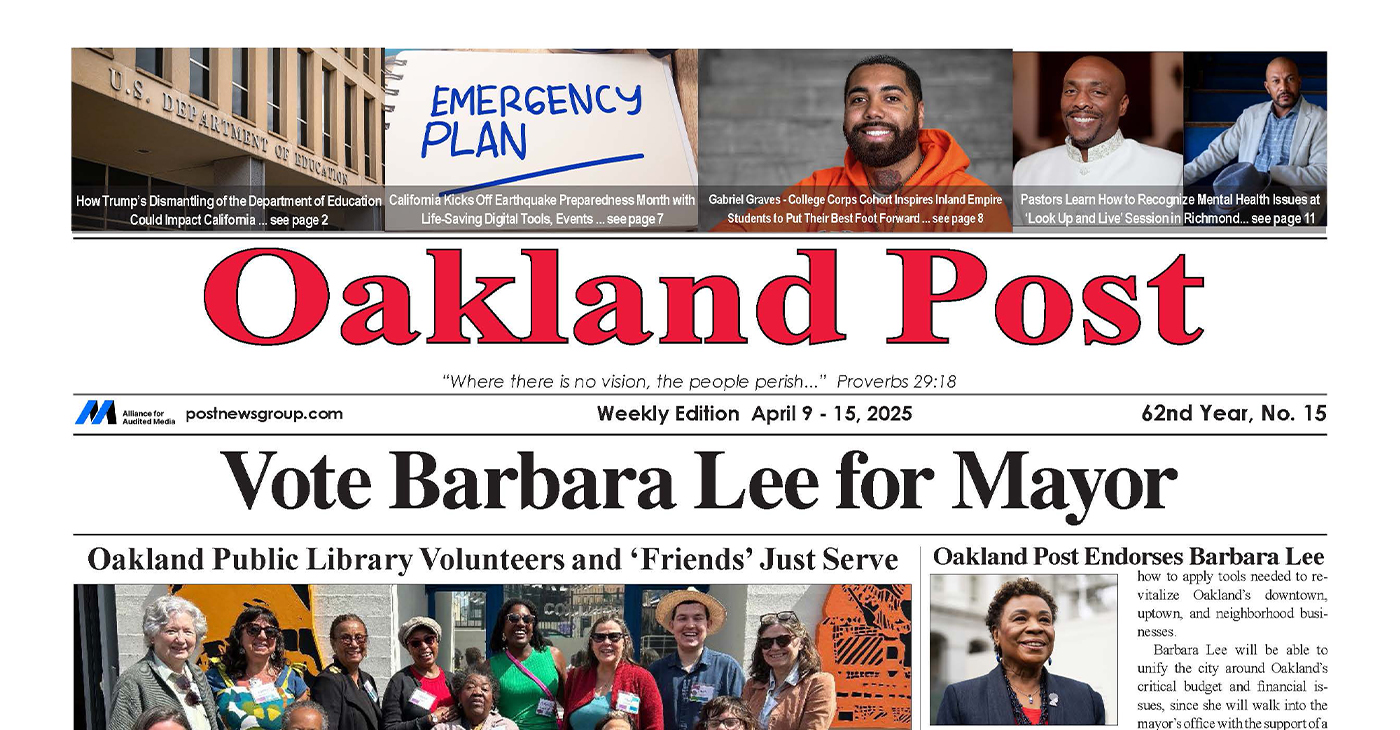
To enlarge your view of this issue, use the slider, magnifying glass icon or full page icon in the lower right corner of the browser window.
-

 Activism4 weeks ago
Activism4 weeks agoOakland Post Endorses Barbara Lee
-
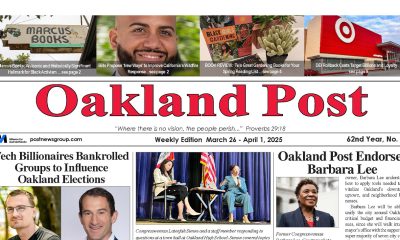
 Activism4 weeks ago
Activism4 weeks agoOakland Post: Week of March 28 – April 1, 2025
-

 Activism3 weeks ago
Activism3 weeks agoOakland Post: Week of April 2 – 8, 2025
-

 #NNPA BlackPress3 weeks ago
#NNPA BlackPress3 weeks agoTrump Profits, Black America Pays the Price
-

 Activism2 weeks ago
Activism2 weeks agoOakland Post: Week of April 9 – 15, 2025
-

 #NNPA BlackPress3 weeks ago
#NNPA BlackPress3 weeks agoHarriet Tubman Scrubbed; DEI Dismantled
-

 #NNPA BlackPress3 weeks ago
#NNPA BlackPress3 weeks agoLawmakers Greenlight Reparations Study for Descendants of Enslaved Marylanders
-

 #NNPA BlackPress3 weeks ago
#NNPA BlackPress3 weeks agoTrump Targets a Slavery Removal from the National Museum of African-American History and Culture




